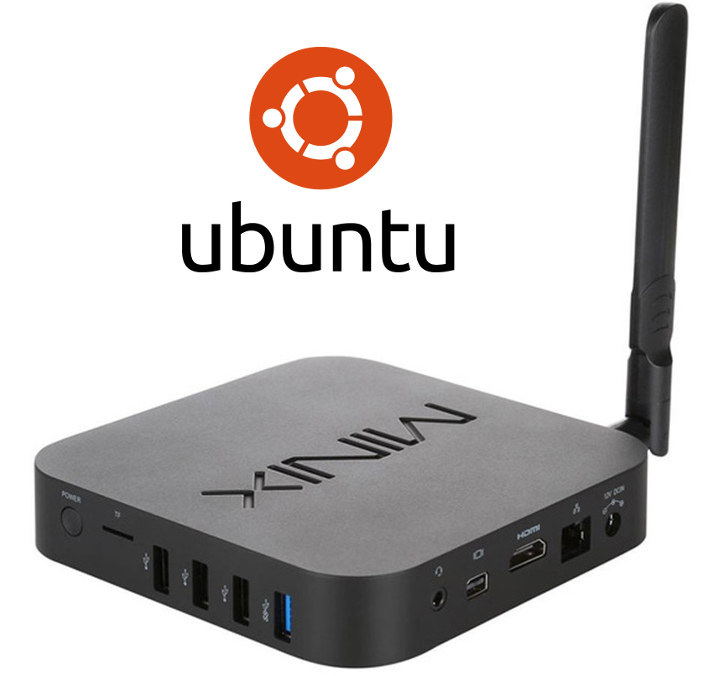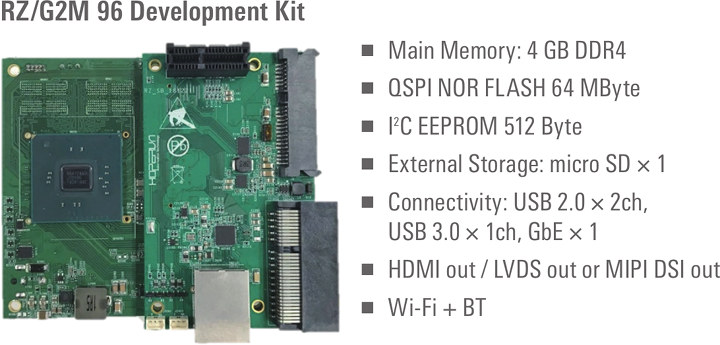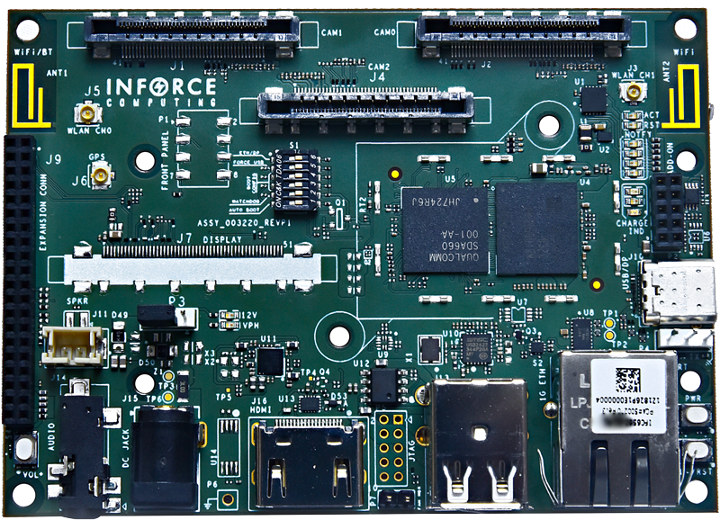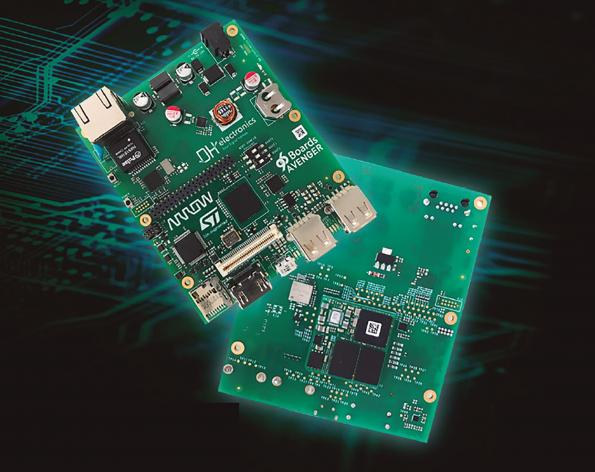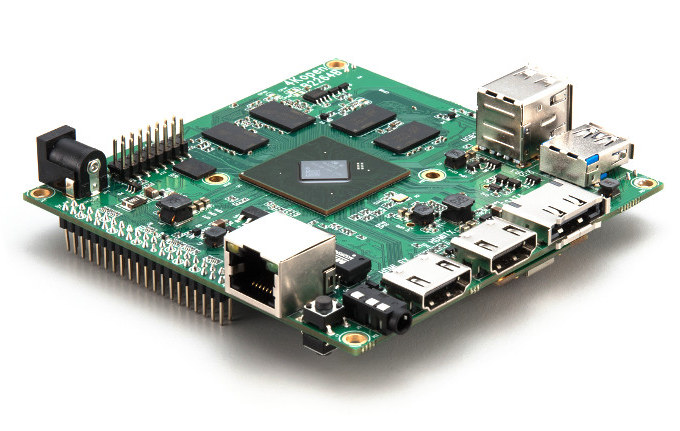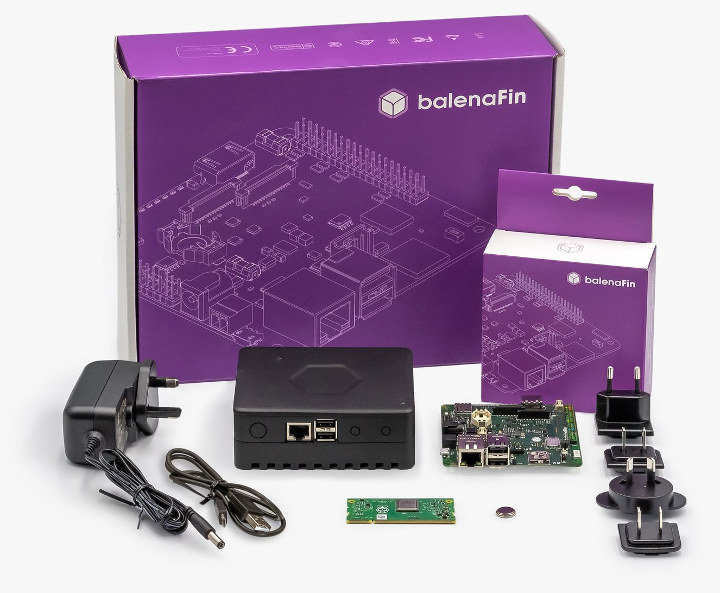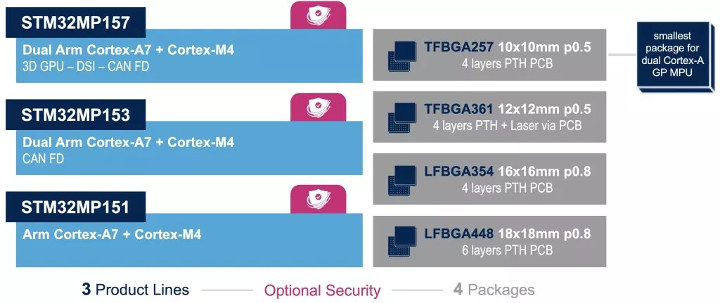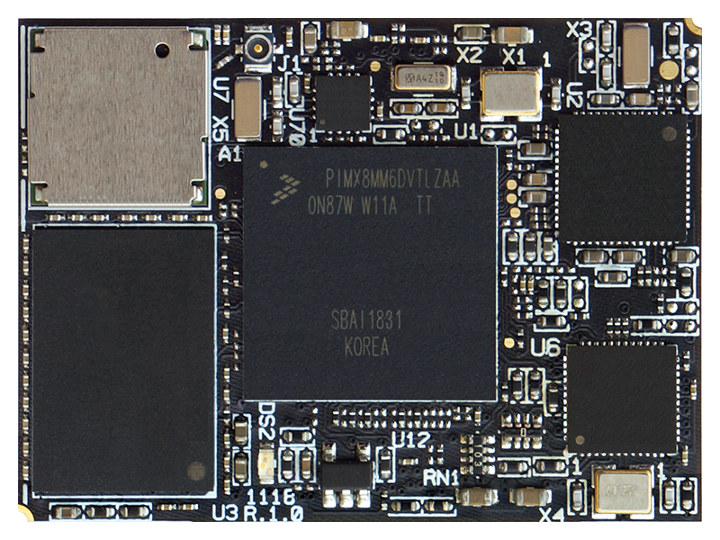Introduced in 2016, MINIX NEO Z83-4 was an Intel Cherry Trail Windows 10 (Home) mini PC powered by Intel Atom x5-Z8300 processor coupled with 4GB RAM and 32GB flash, which was followed by MINIX NEO Z83-4 Pro the next year with basically the same hardware specifications but based on Atom X5-Z8350 processor running Windows 10 Pro instead. The company has now launched another version with MINIX NEO Z83-4U model that comes with 64GB storage, and more importantly comes pre-loaded with Ubuntu 18.04, a rarity in today’s low power mini PC world. MINIX NEO Z83-4U Ubuntu mini PC specifications with bold highlights showing differences against NEO Z83-4 Pro model: SoC – Intel Atom x5-Z8350 “Cherry Trail” quad core processor @ 1.44 GHz / 1.92 GHz (Turbo) with 12 EU Intel Graphics HD graphics 400 @ 200 / 500 MHz (2W SDP) System Memory – 2 or 4GB DDR3L Storage – 64 […]
Renesas RZ/G2 64-Bit MPUs Target Industrial Applications Leveraging SLTS Linux
Renesas RZ/G1 Cortex-A15/A7 processor series was introduced in 2016 targeting industrial human machine interface, and RZ/G1M was one the the first processors supported by the industrial-grade CIP Super Long-Term Support (SLTS) Linux kernel – as part of Renesas RZ/G Linux Platform – with commitment of over 10 years of support. The company has now launched a 64-bit version of the industrial processors with Renesas RZ/G2 family featuring up to eight Cortex-A53/A57 cores and supported by RZ/G Linux Platform for long term Linux support. Renesas RZ/G2 family is now comprised of four SKUs with the following key features and specifications. RZ/G2 Series RZ/G2E RZ/G2N RZ/G2M RZ/G2H Economical Mid-Range (Pin Compatible) Highest Performance CPU (64-bit ARMv8A) 2x Cortex-A53 @ 1.2GHz L1, L2 Parity/ECC 2x Cortex-A57 @ 1.5GHz L1, L2 Parity/ECC 2x Cortex-A57 @ 1.5GHz 4x Cortex-A53 @ 1.2GHz L1, L2 Parity/ECC 4x Cortex-A57 @ 1.5GHz 4x Cortex-A53 @ 1.2GHz L1, L2 Parity/ECC […]
Inforce 6560 Snapdragon 660 Pico-ITX SBC Comes with 3 MIPI Camera Connectors
Inforce Computing has launched yet another Snapdragon-based single board computer with their Inforce 6560 SBC powered by Qualcomm Snapdragon 660 processor with stereoscopic depth sensing and deep learning capabilities made possible thanks to three MIPI camera connectors. The board also comes with to 3GB LPDDR4 RAM, 32GB flash, HDMI and MIPI DSI video outputs, Gigabit Ethernet, a wireless module, USB ports, sensors, and more. Inforce 6560 specifications: SoC – Qualcomm Snapdragon 660 (SDA660) with 8x Kryo ARMv8 compliant 64-bit CPUs arranged in two dual-clusters, running at 2.2GHz (Gold) and 1.8GHz (Silver) each, Adreno 512 GPU, Hexagon 680 DSP with dual-Hexagon vector processor (HVX-512) @ 787MHz for low-power audio and computer vision processing, Spectra 160 camera (dual) Image Signal Processors (ISPs) System Memory – 3GB onboard LPDDR4 RAM Storage – 32GB eMMC flash, 1x µSD card v3.0 socket Video Output / Display Interface HDMI V1.3a FullHD @ 60fps port 4-lane MIPI-DSI with […]
Avenger96 96Boards CE Extended Board Features an STMicro STM32MP1 SoM
STMicro unveiled the first STM32 microprocessor – as opposed to microcontroller – earlier this week with STM32MP1 adding one or two Cortex-A7 cores running Linux to the Cortex-M4F core usually found in STM32 microcontrollers. The company also announced their own evaluation kits and discovery kits but promised a 96boards compliant board and system-on-module would be showcased at Embedded World 2019. But Arrow Electronics has already released some limited information about a 96boards CE extended compliant STM32MP1 powered SBC called Avenger96 and that happens to be designed with a baseboard and an STM32MP157 system-on-module. Avenger96 preliminary specifications: SoC – STMicro STM32MP157 dual Arm Cortex-A7 processor @ 650MHz, Arm Cortex-M4 @ 209MHz, 3D GPU Vivante @ 533MHz with OpenGL ES 2.0 support System Memory – 1GB DRAM DDR3L @ 533MHz Storage – 8GB eMMC flash, 2MB flash, micro SD socket Video Output – HDMI 1.4 (Analog ADV7513 transceiver) Networking – Gigabit Ethernet, […]
4Kopen UHD Video Development Platform Features STMicro STiH418 Media Processor
Back in 2016, I read news about STMicro exiting the set-top box chipset market, so I just assumed all their STiHxx processors would be phased out, and I was surprised to come across 4Kopen, described as an open 4K UHD video development platform powered by STMicro STiH418 media processor, especially it was just showcased at 2019 Integrated Systems Europe (ISE 2019) at the beginning of the month. The development board comes with 2 GB RAM, HDMI 2.0 output, HDMI 1.4 input, Gigabit Ethernet, USB 3.0, a mini PCIe slot fitted with an 802.11b/g/n WiFi module, an eSATA connector and more. 4Kopen (B2264) hardware specifications: SoC – STMicro STiH418 quad-core Arm Cortex-A9 processor @ 1.2 GHz, quad-core Mali-400 GPU, and 4x ST231 DSP (Each Core Quad issue) @ 650 MHz System Memory – 2 GB DDR3 @ 2133 MHz Storage – micro SD socket, eSATA port Video & Audio I/O Output […]
balenaFin Raspberry Pi CM3+/Lite Developer Kit Launched for $179 and Up
Balena.io – previously known as resin.io – first unveiled Resin.io Project Fin in March 2018. The carrier board for Raspberry Pi CM3L was designed with the aim of easing the management of fleets of connected devices thanks to ResinOS operating systems and the ability to deploy apps packaged in containers through their balenaCloud service. The project had been renamed to balenaFin a little while ago, and the company has now announced availability of balenaFin 1.1 developer kit with various improvements including support for PoE, dual camera, and Raspberry Pi CM3+/Lite module. balenaFin v1.1 carrier board specifications with improvements highlighted in bold: Supported SoM Raspberry Pi Compute Module 3 Lite with Broadcom BCM2837 quad-core ARM Cortex A53 processor at 1.2GHz, 1GB RAM Raspberry Pi Compute Module 3+/Lite with Broadcom BCM2837B0 quad-core ARM Cortex A53 processor at 1.2GHz, 1GB RAM Storage – 8, 16, 32, or 64 GB industrial grade eMMC 5.1 […]
STMicro STM32MP1 Cortex A7/M4 MPU Supports Linux and Android
When Linux 4.17 was released last June, we discovered an interesting new STM32 part: STM32MP157C dual core Cortex-A7 processor. It was the first time I saw an STM32 IC not based on Arm Cortex-M microcontroller core, but we knew only very little details at the time. STMicro has now made it official, and introduced STM32MP1, the first STM32 MPU (Microprocessor Unit) that features one or two Arm Cortex-A7 cores running Linux, as well as an Arm Cortex-M4 real-time core that allows to re-use code from existing STM32 projects. STM32MP1 key features and specifications: Cores Single or Dual Cortex-A7 core(s) running at 650 MHz with 32-Kbyte L1 Instruction cache, 32-Kbyte L1 Data cache, 256-Kbyte Level 2 cache Cortex-M4 core running at 209 MHz with single-precision floating point unit (FPU), digital signal processor (DSP) instructions, and memory protection unit (MPU) GPU (STM32MP157 only) – Vivante 3D GPU with OpenGL ES 2.0 support; […]
CompuLab UCM-iMX8M-Mini is a Stamp Size i.MX 8M Mini SoM
We’ve recently written about several new hardware platforms based on the latest NXP i.MX 8M Mini processor family including Nitrogen8M_Mini SBC and F&S Elektronik PicoCore MX8MM SoM. Thanks to a new 14-nm process, the new family has the advantage of consuming less power, and the Cortex-A53 cores can run at a higher frequency. They should cost less as well thanks to cost-saving measures like the adoption of a 1080p video decoder instead of a 4K decoder found in the older NXP i.MX 8M family. CompuLab has now launched their own NXP i.MX 8M Mini SoM with UCM-iMX8M-Mini module that’s about the size of a largish stamp (38 x 28 mm) suitable for portable and space constrained applications such as professional handheld devices, wearable healthcare monitors and medical devices, autonomous drones with visual object recognition, or portable instrumentation equipment with advanced HMI. CompuLab UCM-iMX8M-Mini SoM specifications: SoC (one or the other) […]


